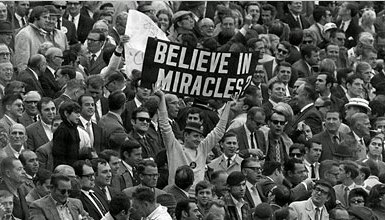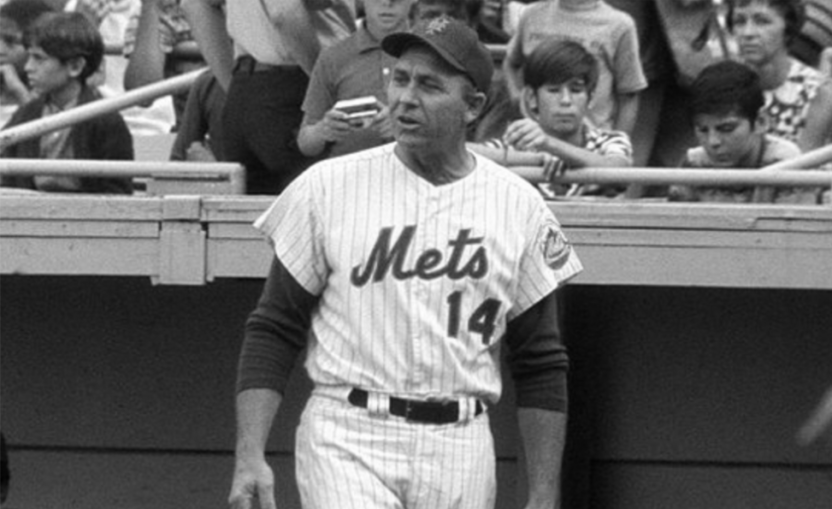
Photo: Gil Hodges, MLB.com
Welcome to Part Three of my exclusive four part series entitled: How The Miracle Mets Were Built. If haven’t read my first two installments you check them out here:
Part 1 – The Spring of 1968
Part 2 – The 1968 Offseason
Part 3 – The Spring of 1969
Part 4 – The Summer of 1969
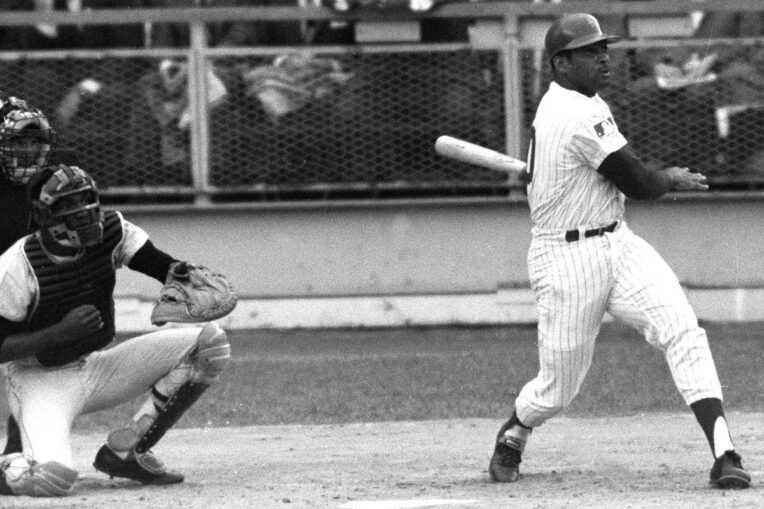
Tommie Agee, Daily News
With no major acquisitions over the winter, the focus in spring training was primarily on the young players. The one exception was Tommie Agee.
Coming off a disastrous first season, Agee was surprisingly handed the centerfield job in spring training, with manager Gil Hodges showing unwavering faith in Agee’s ability to bounce back.
This was in spite of the fact that two of the prominent rookies in camp were all-star center fielders in the minor leagues, Amos Otis at AAA Jacksonville and Rod Gaspar at AA Memphis.
On the pitching front, Gary Gentry was penciled in to the rotation and Tug McGraw was ticketed to replace Don Shaw as the team’s primary lefty reliever. The Mets felt that their biggest need which could be solved internally was at third base where veteran Ed Charles would be phased out, if not replaced entirely.
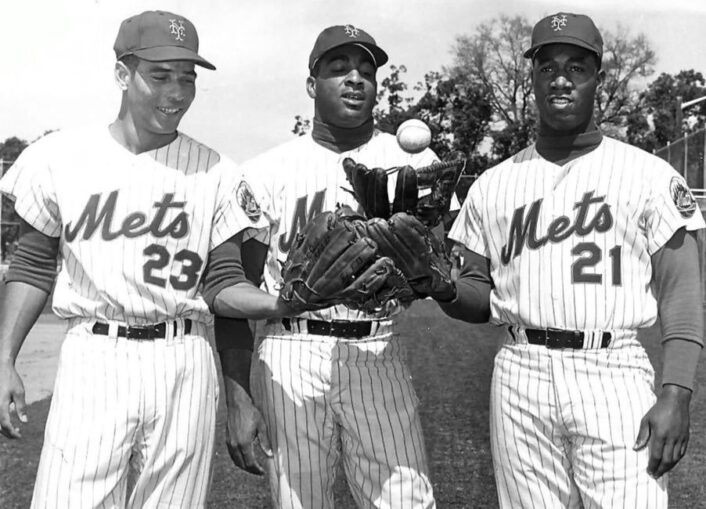
Photo: Amos Otis, Tommie Agee, Cleon Jones
The Mets’ best rookie position player, Amos Otis would be given first shot at the job. In the minors, Otis, a one-time minor league Rule 5 selection from the Red Sox, had played all over the field, and with third base perceived as the Mets’ greatest need, Otis would be given every opportunity to succeed there despite the fact that he was primarily an outfielder in 1968.
There was also talk that the Mets, in need of a legitimate slugger would package Ed Kranepool and several other players possibly including Otis, Grote, and one of the young pitchers to get Joe Torre from the Braves. But that never materialized because the Mets were especially reluctant to give up Otis who was considered “untouchable”.
At the time, Torre was still primarily a catcher, although he had played some first base. Had the Mets been able to get him without surrendering Grote, he would have probably played first. In any case, Torre wound up going to the Cardinals for Orlando Cepeda.
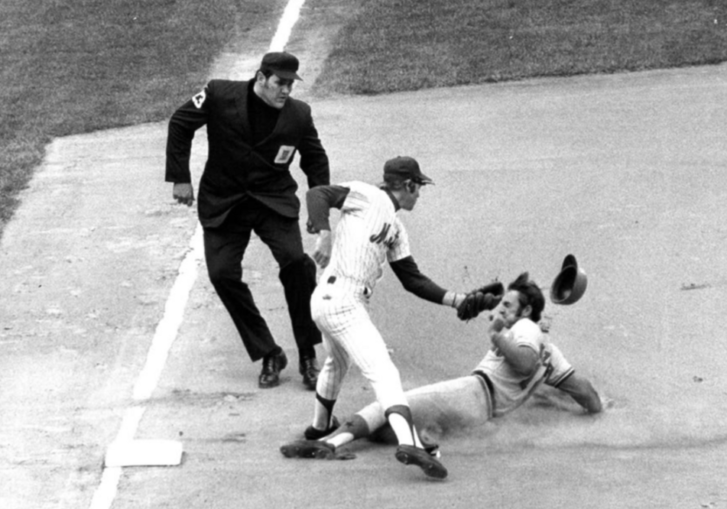
Photo: Wayne Garrett, SI.com
When spring training ended, rookies Wayne Garrett and Rod Gaspar were added to the bench as was rookie catcher Duffy Dyer. The Otis experiment at third was considered a failure and Otis would spend most of the year back at Triple-A playing the outfield while Ed Charles reclaimed the starting job with Garrett in reserve.
So, basically, the Mets went into 1969 with virtually the same team that won 73 games in 1968 and without acquiring the cleanup hitter they were seeking.
There was always hope that the younger players would continue to get better, but really, was this Mets team a team that could challenge the defending league champion St. Louis Cardinals or the Chicago Cubs?
The regular season started and as they had done every year before, the Mets lost on Opening Day. This time it was particularly embarrassing, losing at home to the expansion Montreal Expos 11-10 with ex-Met Don Shaw the winner in relief.
Things didn’t get much better as the Mets started the season going 18-23 looking to hold off the Expos and possibly the Phillies and potentially finish in fourth place.
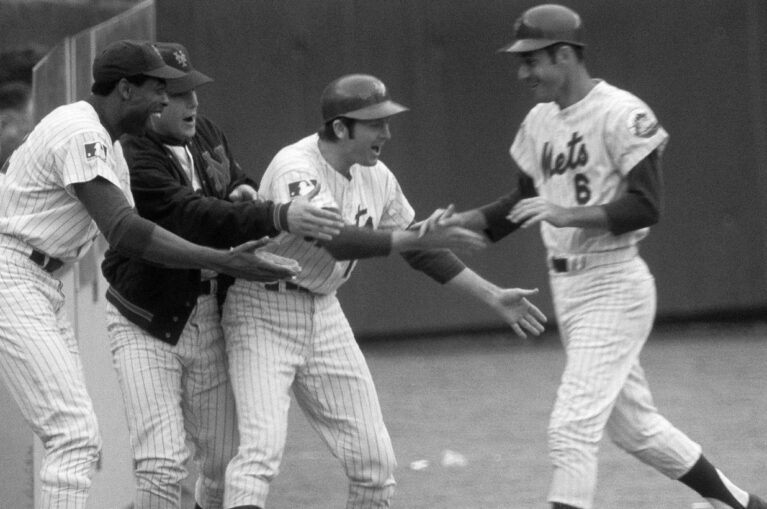
Photo: Al Weis, NY Post
Then suddenly, things changed. Playing the Dodgers and Giants had never been a pleasant experience for the Mets, but somehow the Mets were able to win 11 games in a row, with seven of them against Los Angeles and San Francisco, and four wins against the expansion Padres.
Their record now rose to 29-23 and suddenly Mets fans began to think that maybe this would be the year the team could turn it around and finish over .500. The Mets still appeared to be in desperate need of a power hitter and a veteran presence in the clubhouse if they wanted to be considered legitimate contenders. And with trade rumors beginning to circulate again, the best was yet to come.
